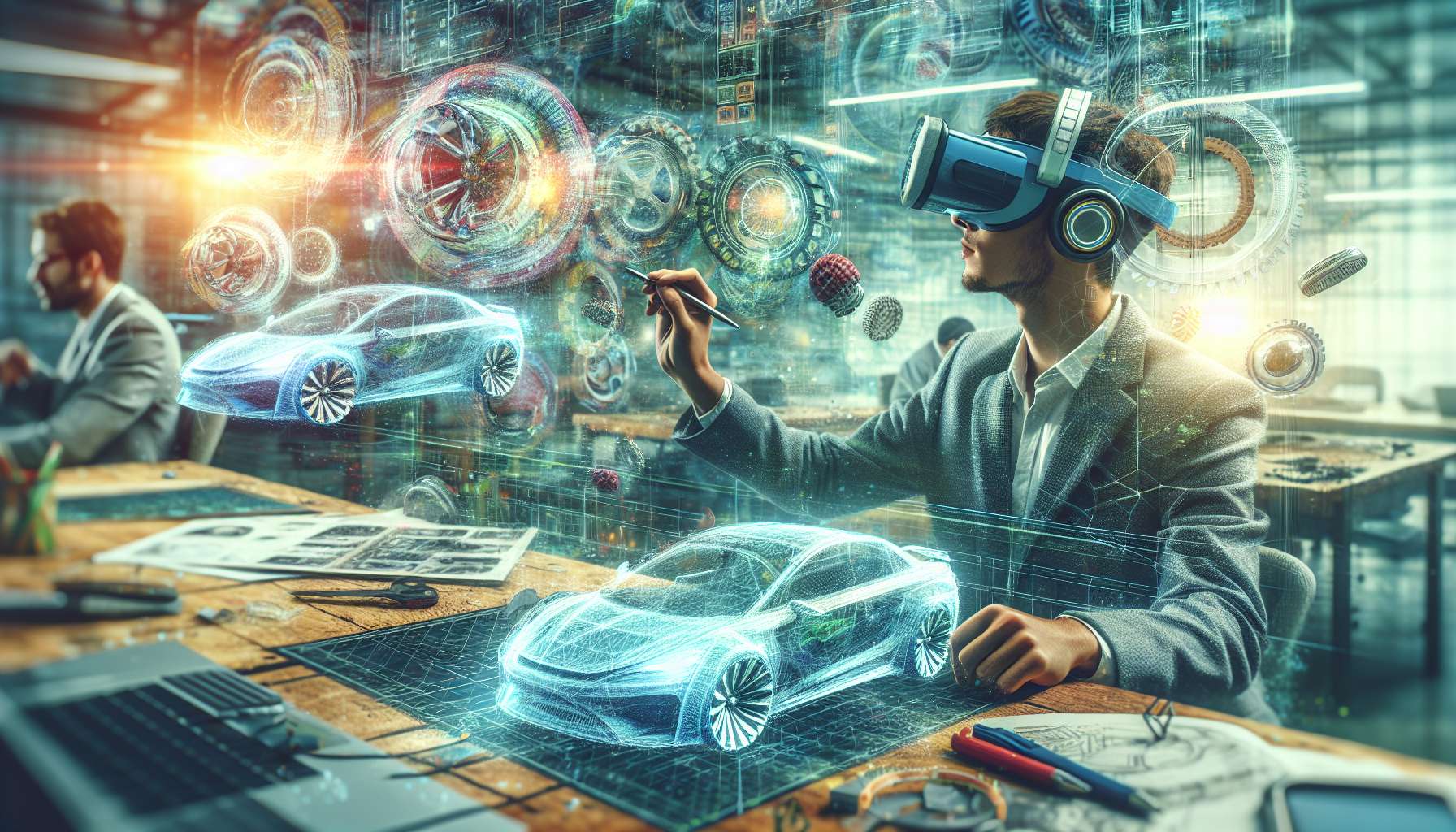Unlocking the Potential: How AR is Revolutionizing Car Design
Augmented Reality (AR) technology has been making waves in various industries, and one area where its impact is truly transformative is car design. With its ability to overlay digital information onto the real world, AR is revolutionizing the way cars are conceptualized, designed, and manufactured. In this article, we will explore the exciting ways in which AR is shaping the future of car design.
Streamlining the Design Process
Traditionally, car designers relied on physical prototypes and 2D drawings to visualize their ideas. However, AR is changing the game by allowing designers to create virtual 3D models that can be viewed and manipulated in real-time. This not only speeds up the design process but also enables designers to make more informed decisions by visualizing the final product in a realistic manner.
AR technology also facilitates collaboration among designers, engineers, and other stakeholders. With the help of AR-enabled devices, teams can work together remotely, viewing and interacting with the same virtual model simultaneously. This level of collaboration enhances communication, reduces errors, and ultimately leads to more efficient and innovative car designs.
Enhancing Design Visualization
AR brings car designs to life by overlaying virtual elements onto physical objects. Designers can use AR to project virtual components, such as headlights, spoilers, or even entire car bodies, onto real-world surfaces. This allows them to visualize how different design elements will look and fit on the actual vehicle, without the need for physical prototypes.
Moreover, AR enables designers to experiment with various color schemes, materials, and finishes in real-time. By simply changing the AR settings, designers can instantly see how different paint colors or interior trims will appear on the car, helping them make more informed decisions and create visually stunning designs.
Improving User Experience
AR is not only transforming the design process but also enhancing the user experience of car buyers. With AR-enabled mobile apps, potential customers can use their smartphones or tablets to visualize how a particular car model will look in their driveway or garage. They can explore different color options, customize features, and even take virtual test drives, all from the comfort of their own homes.
Furthermore, AR can be utilized in showrooms and dealerships to provide interactive and immersive experiences for customers. By using AR headsets or smart glasses, customers can explore virtual showrooms, interact with virtual car models, and access detailed information about the vehicle’s features and specifications. This not only enhances the buying experience but also helps customers make more informed decisions.
Looking Ahead
The impact of AR on car design is just the beginning. As the technology continues to evolve, we can expect even more exciting developments in the automotive industry. For instance, AR could be used to assist in the manufacturing process, providing real-time guidance to assembly line workers or aiding in quality control inspections.
Additionally, AR could play a significant role in autonomous vehicle design. By overlaying virtual elements onto the real world, AR can help engineers and designers visualize how self-driving cars will interact with their surroundings, optimizing their design for safety and efficiency.
In conclusion, AR technology is revolutionizing car design by streamlining the process, enhancing visualization, and improving the user experience. As this technology continues to advance, the possibilities for innovation in the automotive industry are endless. Whether it’s designing the cars of tomorrow or providing immersive experiences for car buyers, AR is undoubtedly shaping the future of car design.





